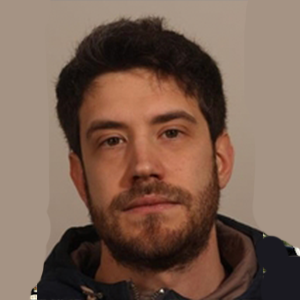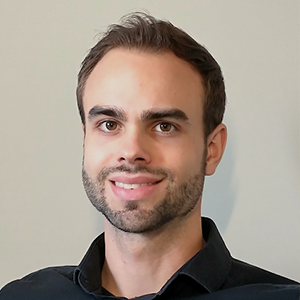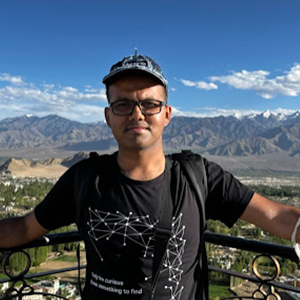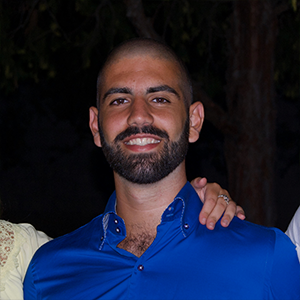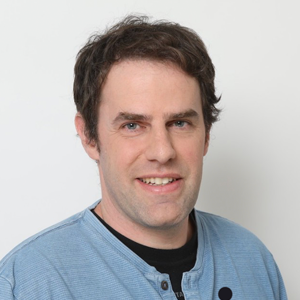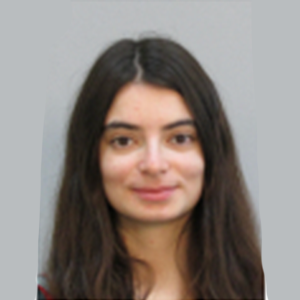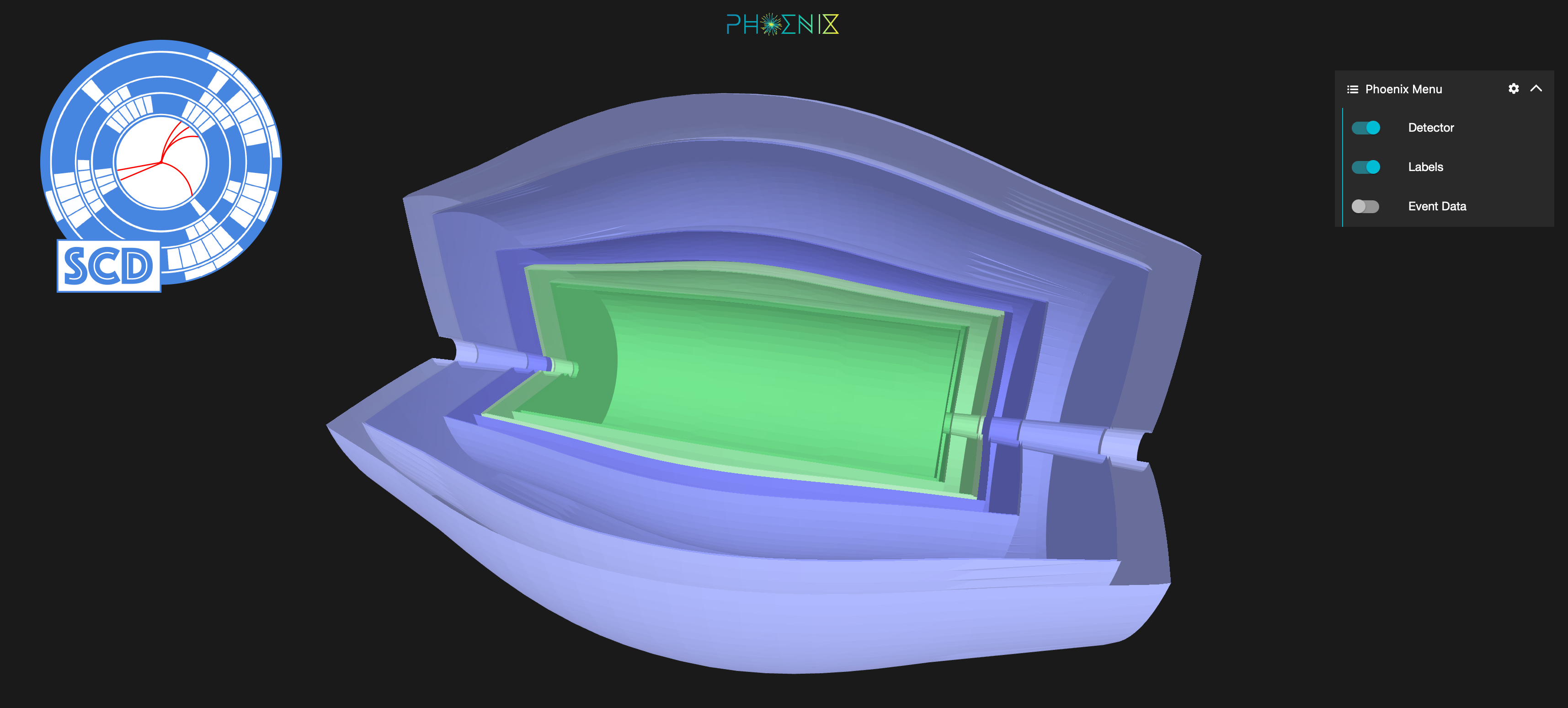Nilotpal Kakati and Nathalie Soybelman on behalf of the SCD-Team
Introduction
ML research in High Energy Physics (HEP) requires to have a realistic detector simulation, with the full set of features characterizing calorimeter showers, but the available tools are either -
- Very detailed and accurate, but internal and proprietory to experiments like ATLAS and CMS.
- Open-source, but very simplified, parameteric setup such as Delphes [1],which applies a parametric smearing instead of computing interactions at the particle shower level
We present -
- Simplified Cylindircal Detetector (SCD), a fully configurable, open source, GEANT4 [2] based detector simulation
- SCD mimics the granularity and response characteristics of general purpose detectors at the LHC like ATLAS and CMS
We also show two ML use-cases
Detector Design and Event Processing
- Final state truth particles produced by Pythia8 [3] from underlying specified event
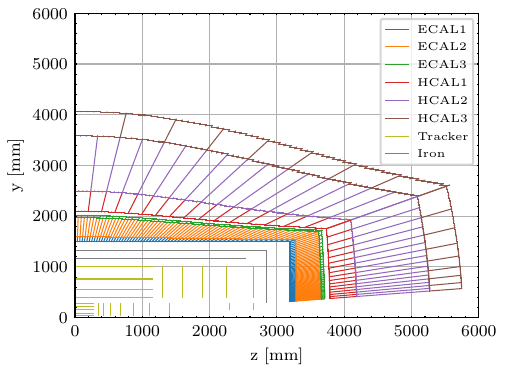

- Inner Tracking System (ITS)
- The ITS consists of hollow cylinders at the center and disks at the edges
- Required to simulate material interactions for accurate shower simulation
- Has a configurable magnetic field (default 3.8T)
- Parameterized tracks with smearing
- Potential extension with an open data tracking detector (in future).
-
ECAL and HCAL
- An iron layer seperates ECAL from the ITS.
- Both calorimeters consist of 3 concentric layers.
- The geometric coverage of the SCD calorimeter is split into a barrel (abs(η) < 1.5) and two identical endcaps (1.5 < abs(η) < 3)
- In each layer the cells have a constant depth and cover the same distance in terms of pseudorapidity (η) and azimuthal angle (φ).
- This ensures a uniform distribution of incoming particles and the layer fraction of deposited energy not to depend on the direction of incoming particles.
- The obtained 1 / cosh η shape is similar to the CMS design and is better suited for shower learning tasks than a rectangular calorimeter design.
- The calorimeters are configurable (material, granularity, depth, readout noise etc.) with the default settings corresponding to the ATLAS setup. Particles interact with the material and the deposited energy is recorded.
-
Supports jet clustering using the external FastJet [4] library
-
Has an topological clustering algorithm modeled after [5] to cluster cells with energy deposits to separate hadronic form electromagnetic showers and suppress noise.
Performance
For the following plots individual particles were sent through the detector and the response was recorded.
- The energy deposits in the different layers for charged pions, electrons and photons.
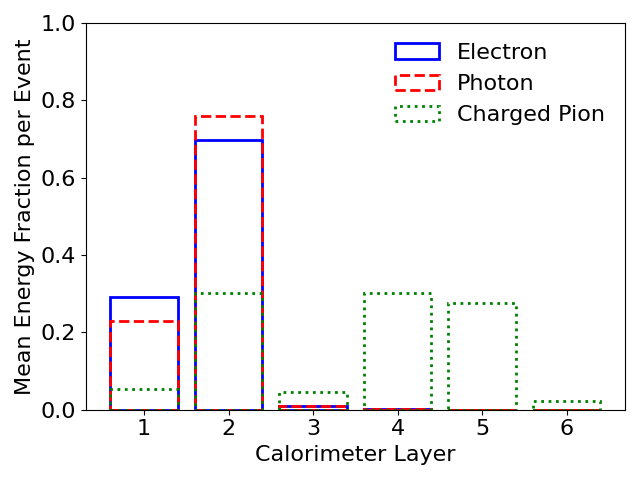
- The total cell energy of the topoclusters for different initial energies for photons (initial η = 0).
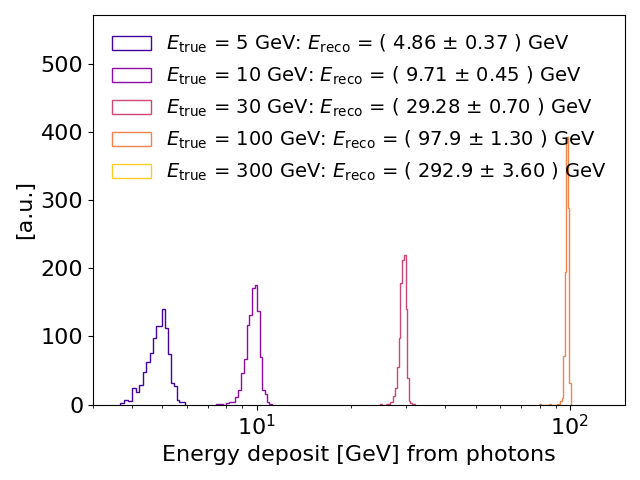
Phoenix Event Display
A Phoenix support for the detector simulation was implemented. It shows -
- the detector geometry
- the physical objects in an event - tracks, jets and cells.
A demo with a ttbar event -
SCD in Action
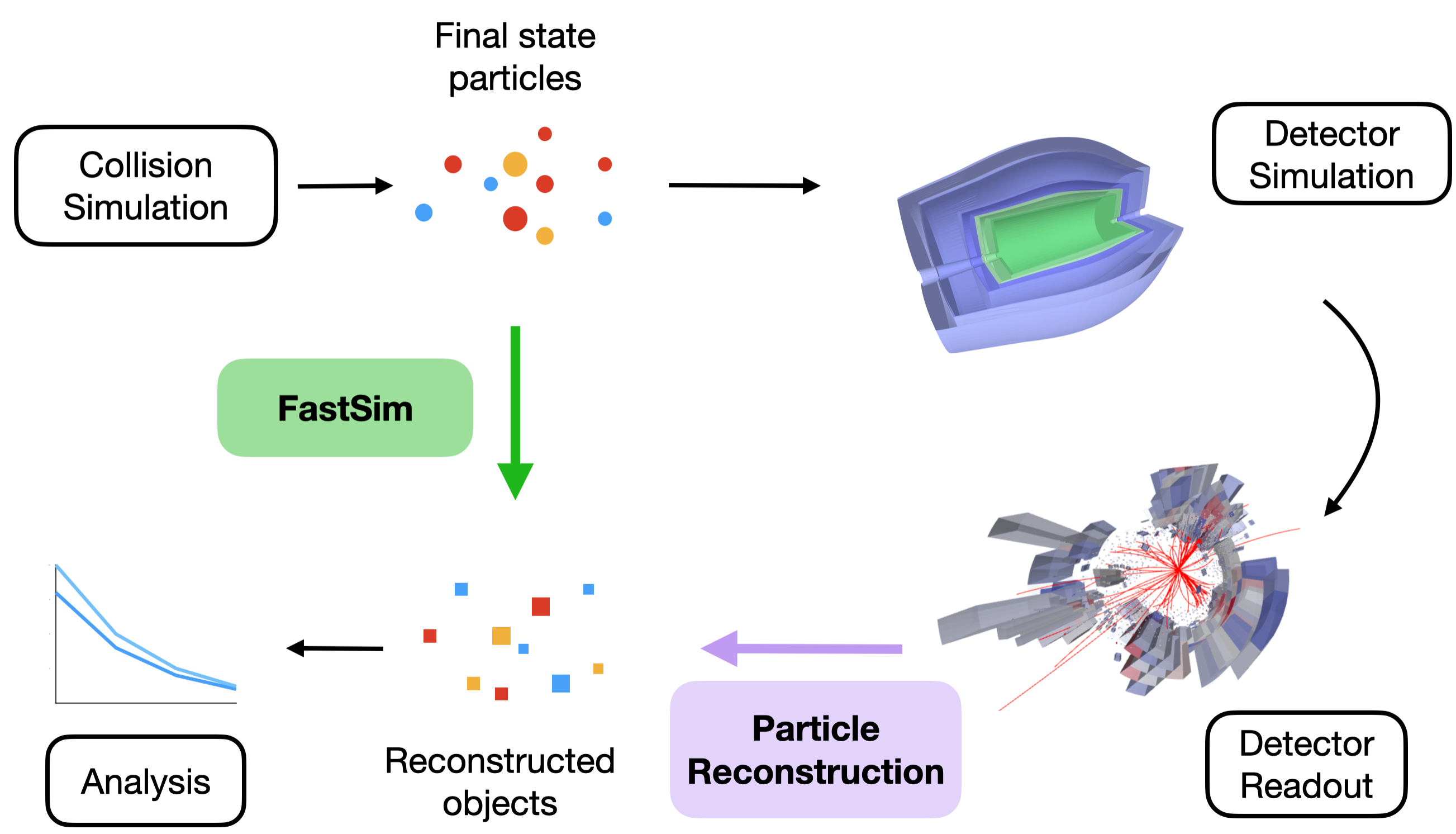
ParticleFlow
We try to reconstruct the final state particles from the detector readout using multiple graph-based approaches (object condensation, TSPN + slot attention (SA), Recurrently learning hypergraphs (HG)). The novel approach with HG seems to outperform the traditional baseline, and the other ML approaches
An example event. Thanks to SCD, we can also investigate what’s happening at the cell level!
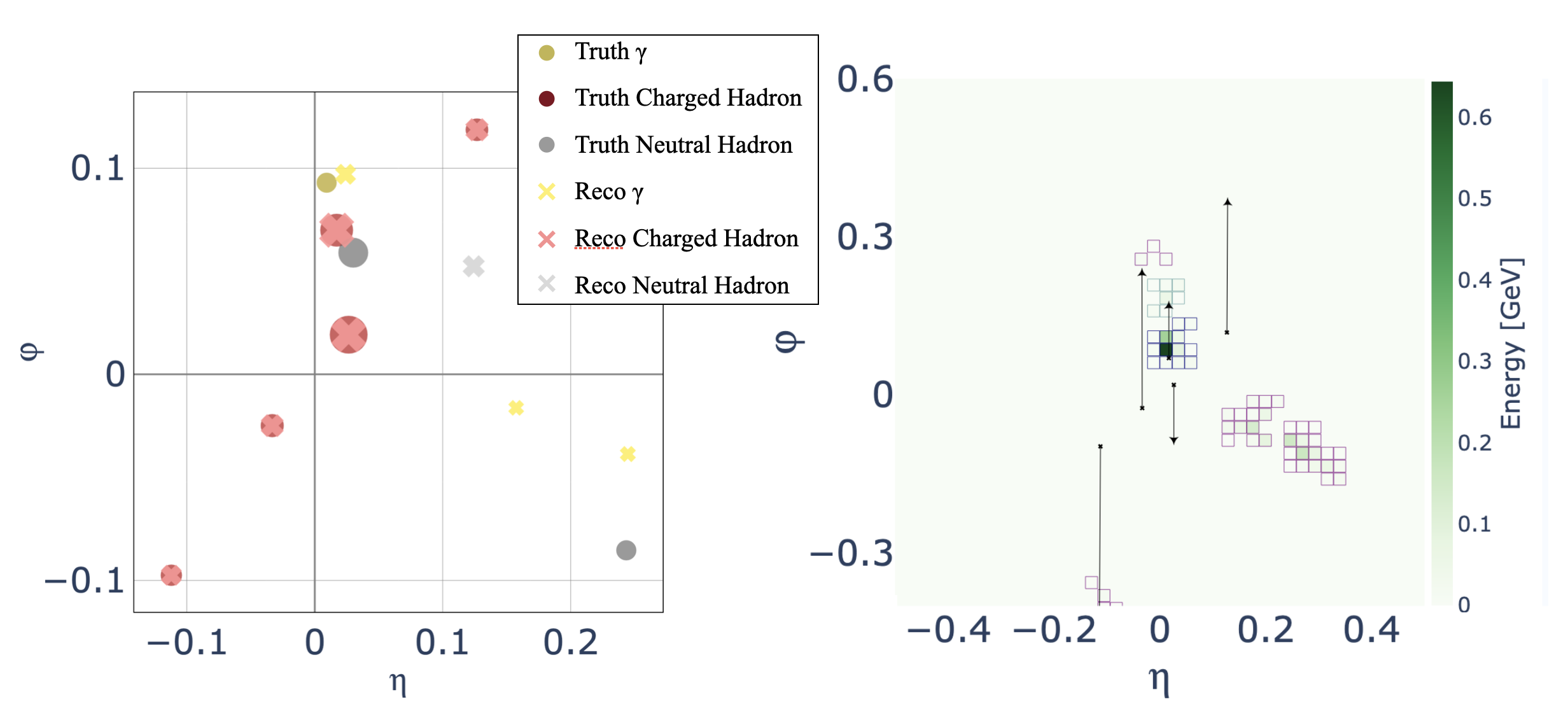
(paper coming soon!)
FastSim
This tool is being developed to directly map final state truth particles to the reconstructed events, skipping detector simulation and reconstruction. Events processed by the SCD with an additional ParticleFlow algorithm applied are used as target for training.
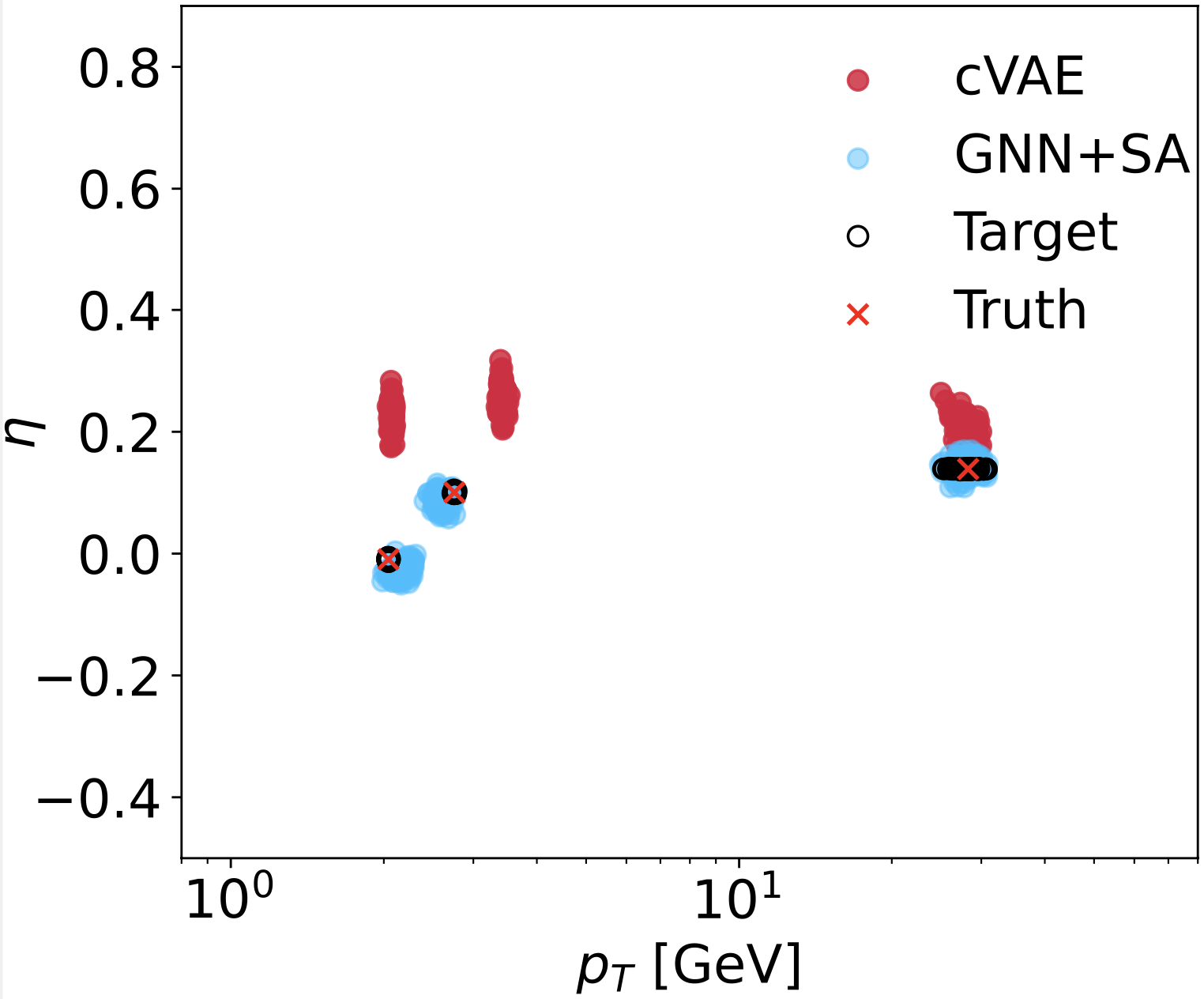
(paper coming soon!)
References
[1] A. Mertens. New features in Delphes 3. J. Phys.281 Conf. Ser., 608(1):012045, 2015
[2] S. Agostinelli et al. GEANT4: A simulation toolkit. Nucl. Instrum. Meth., A506:250–303, 2003
[3] C. Bierlich, et al. A comprehensive guide to the physics and usage of pythia 8.3, 2022
[4] M. Cacciari, G. P. Salam, G. Soyez. FastJet user manual. The European Physical Journal C,72(3), mar 2012
[5] Georges Aad et al. Topological cell clustering in the ATLAS calorimeters and its performance in LHC Run 1. Eur. Phys. J. C, 77:490, 2017
The SCD team

